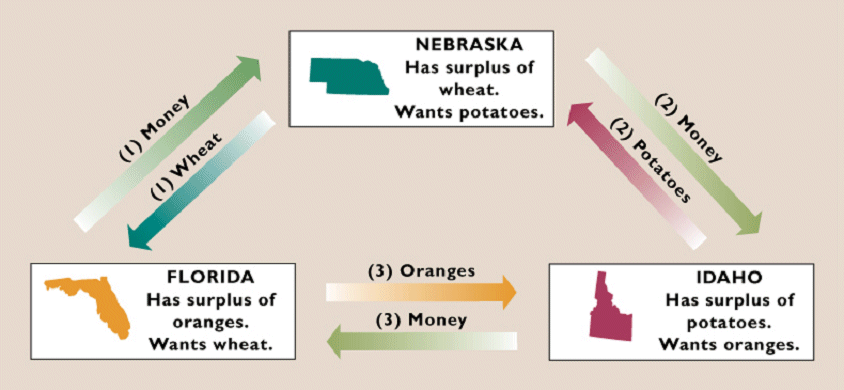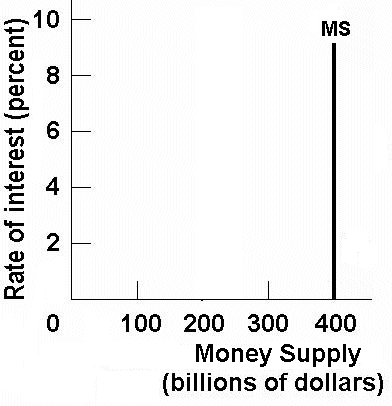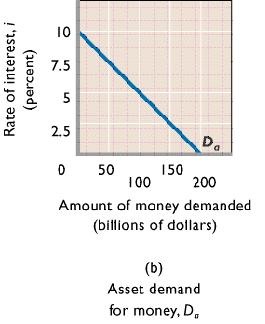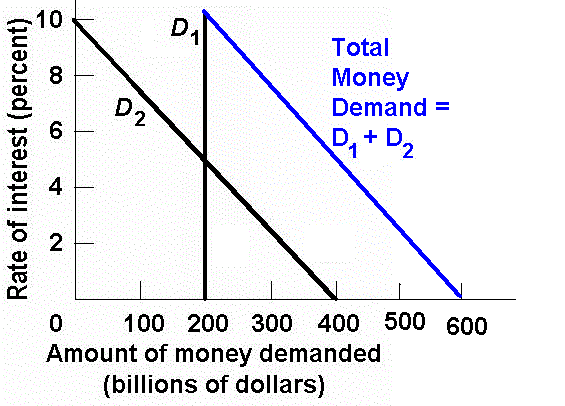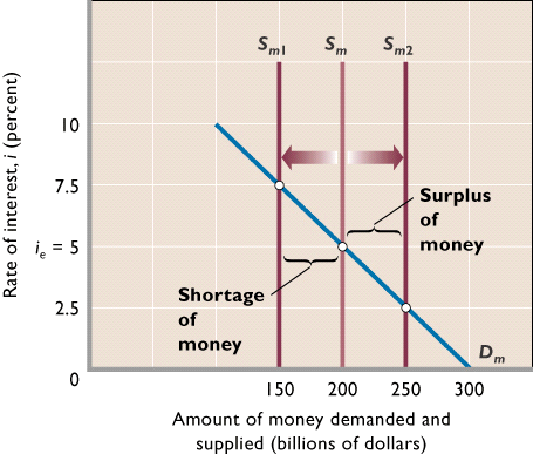B. Why Monetary Side is Important
1. Alternative to money: BARTERa. Definition: the exchange of one good or service for another good or serviceb. Problems with barter:
- coincidence of wants:
- a situation in which the good or services that one trader desires to obtain is the same as that which another desires to give up and an item that the second trader wishes to acquire is the same as that which the first trader desires to surrender
- you have to find somebody who wants to trade the item that you want to get AND who also wants the item that you have that you want to trade
- With barter there will be less specialization because of the difficulty of overcoming the coincidence of wants.
- If you can't find someone to trade with, you will have to produce it yourself
- Less specialization means less output and MORE SCARCITY
2. Money facilitates trade and promotes specialization

